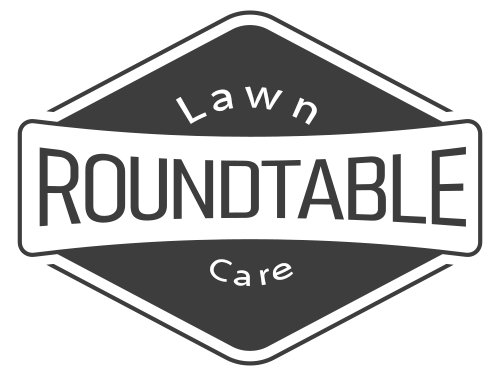Mastering the Art of Weed Control in Georgia’s Green Haven

Take Control of Unwanted Guests in Georgia: A Comprehensive Guide to Weed Management
Georgia’s lush landscapes are a haven for diverse plant life, unfortunately, including persistent weeds that can quickly overrun your garden or lawn. To maintain a healthy outdoor space, it’s crucial to establish an effective weed control strategy. Our comprehensive guide will empower you with the knowledge and tools to conquer these unwanted invaders, ensuring a vibrant and flourishing outdoor paradise.
Join us as we delve into the world of weed control, navigating through various techniques and solutions. Learn about the common weeds in Georgia, their characteristics and life cycles, to develop targeted strategies for their eradication. Discover the power of cultural practices like mowing, watering, and fertilization in promoting healthy plant growth and naturally suppressing weed germination. Explore eco-friendly homemade weed killers using everyday ingredients like vinegar and baking soda, offering safe and organic alternatives to chemical herbicides.
Key Insights: A Concise Summary of Weed Control Essentials
- Identify Common Weeds: Familiarize yourself with prevalent weed species in your area to develop targeted control strategies.
- Embrace Cultural Practices: Implement proactive measures like proper mowing, watering, and fertilization to promote healthy plant growth and naturally suppress weeds.
- Explore Natural Remedies: Utilize homemade weed killers using vinegar, baking soda, or essential oils as eco-friendly alternatives to chemical herbicides.
- Adopt Integrated Weed Management: Combine multiple methods, including cultural practices, natural remedies, and chemical control, for a comprehensive and sustainable approach.
- Seek Professional Help When Needed: Consult licensed applicators for large-scale infestations or persistent weed problems requiring specialized treatment.
1. Identifying Common Weeds in Georgia
Identifying Common Weeds in Georgia: A Key Step Towards Effective Control
Embarking on a successful weed control journey begins with identifying the prevalent weed species in your Georgia landscape. Understanding their unique characteristics and life cycles empowers you to devise targeted control strategies that effectively combat these persistent invaders.
Georgia’s diverse climate fosters a wide range of weeds, each with its own set of traits and vulnerabilities. Familiarize yourself with common broadleaf weeds such as dandelions, clover, and chickweed, easily recognized by their broad, flat leaves. Grasses like crabgrass and ryegrass spread aggressively via rhizomes or stolons, forming dense patches that can quickly dominate your lawn. Additionally, sedges, with their triangular stems and grass-like appearance, can pose a challenge in moist areas.
By identifying the specific weeds you’re dealing with, you gain valuable insights into their vulnerabilities and can tailor your control methods accordingly. This targeted approach not only enhances the effectiveness of your weed management efforts but also minimizes the potential for harm to desirable plants and the environment.
2. Cultural Practices for Weed Suppression
Cultural Practices for Weed Suppression: Empowering Your Landscape with Natural Resilience
Beyond targeted weed control measures, adopting proactive cultural practices can significantly enhance your landscape’s natural ability to resist and suppress weed invasion. By promoting healthy plant growth and competitiveness, these practices create an environment where weeds struggle to establish and thrive.
Proper mowing, watering, and fertilization are the cornerstones of effective cultural weed suppression. Mowing at the recommended height for your grass species encourages dense growth, reducing the availability of sunlight and space for weed germination. Regular watering promotes deep root development, making plants more resilient to drought and better able to outcompete weeds for water and nutrients. Fertilization provides essential nutrients for healthy plant growth, strengthening their natural defenses against weed encroachment.
Additional cultural practices like mulching, crop rotation, and companion planting further bolster weed suppression. Mulch acts as a physical barrier, preventing weed seeds from reaching the soil and germinating. Crop rotation disrupts weed life cycles by preventing the same species from establishing year after year. Companion planting introduces beneficial plants that release natural herbicides or create unfavorable conditions for weeds.
3. Homemade Weed Killers: Natural and Organic Solutions
Cultural Practices for Weed Suppression: Empowering Your Landscape with Natural Resilience
Beyond targeted weed control measures, adopting proactive cultural practices can significantly enhance your landscape’s natural ability to resist and suppress weed invasion. By promoting healthy plant growth and competitiveness, these practices create an environment where weeds struggle to establish and thrive.
Mowing, watering, and fertilization are the cornerstones of effective cultural weed suppression. Regular mowing at the recommended height for your grass species encourages dense growth, reducing the availability of sunlight and space for weed germination. Watering deeply and regularly promotes deep root development, making plants more resilient to drought and better able to outcompete weeds for water and nutrients. Fertilization provides essential nutrients for healthy plant growth, strengthening their natural defenses against weed encroachment.
4. Chemical Weed Control: A Targeted Approach
Cultural Practices for Weed Suppression: Empowering Your Landscape with Natural Resilience
Beyond targeted weed control measures, adopting proactive cultural practices can significantly enhance your landscape’s natural ability to resist and suppress weed invasion. By promoting healthy plant growth and competitiveness, these practices create an environment where weeds struggle to establish and thrive.
Mowing, watering, and fertilization are the cornerstones of effective cultural weed suppression. Regular mowing at the recommended height for your grass species encourages dense growth, reducing the availability of sunlight and space for weed germination. Watering deeply and regularly promotes deep root development, making plants more resilient to drought and better able to outcompete weeds for water and nutrients. Fertilization provides essential nutrients for healthy plant growth, strengthening their natural defenses against weed encroachment.
5. Pre-Emergent vs. Post-Emergent Herbicides: Choosing the Right Option
Cultural Practices for Weed Suppression: Empowering Your Landscape with Natural Resilience
Beyond targeted weed control measures, adopting proactive cultural practices can significantly enhance your landscape’s natural ability to resist and suppress weed invasion. By promoting healthy plant growth and competitiveness, these practices create an environment where weeds struggle to establish and thrive.
Mowing, watering, and fertilization are the cornerstones of effective cultural weed suppression. Regular mowing at the recommended height for your grass species encourages dense growth, reducing the availability of sunlight and space for weed germination. Watering deeply and regularly promotes deep root development, making plants more resilient to drought and better able to outcompete weeds for water and nutrients. Fertilization provides essential nutrients for healthy plant growth, strengthening their natural defenses against weed encroachment.
6. Integrated Weed Management: A Holistic Approach
Integrated Weed Management: A Holistic Approach for Sustainable Weed Control
An integrated weed management (IWM) approach combines multiple methods to effectively suppress weeds while minimizing reliance on any single technique. By integrating cultural practices, natural remedies, and chemical control, IWM provides a comprehensive and sustainable solution for long-term weed management.
IWM emphasizes prevention and focuses on creating an environment where weeds are less likely to thrive. Cultural practices like proper mowing, watering, and fertilization promote healthy plant growth and competitiveness, naturally suppressing weeds. Natural remedies, such as homemade weed killers using vinegar or essential oils, offer eco-friendly alternatives to chemical herbicides. Chemical control, when necessary, should be targeted and judicious, using herbicides that are effective against the specific weeds present while minimizing harm to desirable plants and the environment.
7. Professional Weed Control Services: When to Seek Help
Professional Weed Control Services: Seeking Expert Assistance for Effective Weed Management
While implementing proactive weed control measures is essential, there are situations where seeking professional weed control services becomes advisable. Licensed applicators possess the expertise, knowledge, and resources to tackle large-scale infestations or persistent weed problems that require specialized treatment.
Professional weed control services can provide targeted solutions for specific weed species and infestations. They have access to a wider range of herbicides and application equipment, ensuring effective and efficient weed removal. Additionally, they are trained in proper herbicide handling and application techniques, minimizing the risk of harm to desirable plants and the environment. Hiring a professional can save time and effort, allowing you to focus on other aspects of your landscape management.
What factors should I consider before choosing a weed control method?
When selecting a weed control method, consider the type of weeds present, the severity of the infestation, the desired level of control, and the potential impact on the environment and non-target organisms. Assess your comfort level with using herbicides and whether you have the necessary equipment for effective application.
Is it always necessary to use chemical herbicides for weed control?
No, chemical herbicides are not always the only solution for weed control. Cultural practices like mowing, watering, and fertilization can promote healthy plant growth and competitiveness, suppressing weeds naturally. Homemade weed killers using vinegar, baking soda, or essential oils offer eco-friendly alternatives for small-scale weed management.
How frequently should I apply weed control treatments?
The frequency of weed control treatments depends on the specific weeds present and the chosen control method. Some weeds require regular treatments throughout the growing season, while others may only need occasional spot treatments. Follow the instructions on the herbicide label carefully and adjust the application schedule based on the effectiveness of the treatment and weed regrowth.
Table of Key Insights: A Summary of Essential Weed Control Principles
| Key Insight | Description | |—|—|—| | Identify Common Weeds | Familiarize yourself with the prevalent weed species in your area to develop targeted control strategies. | | Embrace Cultural Practices | Implement proactive measures like proper mowing, watering, and fertilization to promote healthy plant growth and naturally suppress weeds. | | Explore Natural Remedies | Utilize homemade weed killers using vinegar, baking soda, or essential oils as eco-friendly alternatives to chemical herbicides. | | Adopt Integrated Weed Management | Combine multiple methods, including cultural practices, natural remedies, and chemical control, for a comprehensive and sustainable approach. | | Seek Professional Help When Needed | Consult licensed applicators for large-scale infestations or persistent weed problems requiring specialized treatment. |
